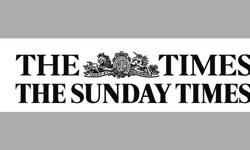Wow! Just look at the tremendous mop of hair sported by a 38-year-old Peter Preston in the Autumn of 1976.
This was when Preston – now a regular InPublishing correspondent – had just become editor of The Guardian, giving The Media Reporter the excuse to use him as the cover shot for its launch issue.
The new magazine didn’t last long and has probably been forgotten by most media watchers. But then this archive copy fell into my hands when I was flicking through the bookshelves at the National Council for the Training of Journalists’ offices in Newport, Essex, earlier this year.
And while it might be interesting to take a look at hairstyles and fashions, there was far more pertinent content to be found on its inside pages.
Buried away on page 38, under the headline ‘Latest circulation figures’, is a list of what were then called ‘provincial’ newspapers, with what today read like unbelievable average daily sales.
OMG!
Back in 1976, the Manchester Evening News was selling nearly 370,000 and the Liverpool Echo more than 285,000. Even the Telegraph & Argus (Bradford) was selling more than 108,000 copies a day.
We’ve taken just the top twelve from this rare archive and have collated them with official figures from 2016, creating a unique table with which to analyse ‘trends of decline’ over the last four decades.
The immediate shudder comes when you simply compare the 1976 and 2016 circulation figures. To detail just the examples above:
* the Manchester Evening News has dropped by 86%, from 366,880 to 52,158;
* the Liverpool Echo has dropped by 81%, from 285,487 to 52,984; and
* the Telegraph & Argus (Bradford) has dropped by 85%, from 108,738 to 15,913.
Once you’ve recovered from seeing the frightening chasm over 40 years, one of the strongest insights is how much more pronounced circulation falls became once online media started to become popular, commonly regarded as around the year 2001.
To show this differential, we’ve added circulation figures from 2001 to our table so that you can easily see the rate of decline from 1976 to 2001, and then from 2001 to 2016.
Look at the circulation falls in the first 25 years to start with: they range from 13% to 62%, with the average drop coming out at 45%. Then look at the declines in the much shorter 15-year period to 2016: they range from 42% to 81%, with the average fall coming out at 68%.
Some media observers have previously scotched any claims that the internet has worsened the decline of print. To reference just one of them, Matthew Gentzkow of Chicago University produced a paper in 2014 arguing that newspapers’ popularity had already significantly diminished between 1980 and 1995, well before the ‘internet age’, and that it had dropped at ‘roughly the same’ rate ever since.
The new comparative figures produced in this article should make Gentzkow and others rethink: yes, newspaper circulations were in long-term decline, but the rate of that decline – certainly in the case of provincial UK titles – steepened by around 50% after 2001.
Another interesting observation is how certain ‘morning’ newspapers based in the north of England have fared better that some of what were once bigger ‘evening’ papers in the midlands and south.
The Press & Journal (Aberdeen), for example, only saw its circulation drop by 13% between 1976 and 2001, and then by 42% between 2001 and 2016. Compare this to papers like the Birmingham Mail, which lost 62% of sales between 1976 and 2001, and then 81% between 2001 and 2016.
These different trends have seen those titles switch rankings during the entire period: the Birmingham Mail was 2nd in 1976 and is now 7th, the Press & Journal was 9th and is now 1st.
Similarly, The Northern Echo (Darlington) was ranked 8th in 1976 but climbed to 5th by 2016, now selling more than the former ‘evening’ titles in big cities like Birmingham and Coventry.
The Yorkshire Post (Leeds) has also seen a comparative improvement in its ranking, moving from 12th in 1976 to 6th in 2016, and now selling more than old ‘evening’ titles in the south of England.
These are snapshots, of course, but it feels like traditional ‘morning’ papers in the north, with their wider, regional audiences spread more thinly across urban and rural areas, are faring better than city-focused titles.
Nowhere is this more pronounced than in Leeds itself, where the ‘morning’ Yorkshire Post (12th in 1976 to 6th in 2016) has leapfrogged its ‘evening’ sister paper (4th to 9th) in terms of sales rankings.
The London effect
The further away from London that you are, it seems the less damaged is your performance: yes, still steeply declining, but not quite as steeply as those closer to London. Again, compare Aberdeen to Birmingham, Brighton or Coventry to see this trend. And note how ‘evenings’ in Manchester and Liverpool are still doing comparatively well.
An even starker comparison of how this ‘distance from London’ theory works comes if you look at the other titles on The Media Reporter’s 1976 list. We haven’t got the space to include them all in the table, but for a quick glimpse, let’s just equate the circulation trends experienced by evening papers in Birmingham and Middlesbrough.
The circulation of the Birmingham Evening Mail dropped from a hefty 335,281 in 1976 to just 24,260 in 2016, a fall of 93% over 40 years in what is the UK’s second biggest city – but one that’s only 120-odd miles from London.
Conversely, the circulation of the Evening Gazette (Teesside) dropped from 100,346 in 1976 to 23,969 in 2016, a fall of 76%. That’s still a steep drop, but it’s significantly less and means that the Gazette’s circulation is now also equal to the evening in Birmingham – which has an urban area at least five times bigger than Teesside.
For someone like myself – who edited both these papers – you have to ask how much this has to do with the fact that Middlesbrough is more than 250 miles from London.
There’s a long list of other reasons for the declines, of course, depending on where you’re based: from age to ethnicity of audiences, and from styles of media ownership to competition from all types of other media.
But geographical and other details aside, it’s difficult not to be depressed by the overall decline of print sales. From 1976 to 2016, the average drop of all 12 titles has been 81%, with some former giants like the Evening Argus (Brighton) now only selling 12,000 copies a day.
And so just for balance, and to end this analysis on a smile, we’ve also included the latest digital figures in our table, citing the ‘unique average daily browser’ figures for 11 of our 12 titles. One person could be up to three ‘unique’ browsers, of course, given that you might be using your mobile phone, iPad and PC screen on any given day to access the same title’s website.
But even taking that caveat into consideration, it’s refreshing to see some titles’ 1976 print circulations outstripped by their 2016 unique browser levels. The gigantic online figures for the likes of Manchester and Liverpool, by the way, are often put down to the global popularity of Manchester United and Liverpool football clubs, as well as the likes of pop bands like Oasis and The Beatles. All they need to do now is to grow the commercial strength of these websites – a big challenge for all media.
The Media Reporter, by the way, also listed national newspaper circulations from 1976, and so let’s take a quick look at how just three popular titles fared in the last 40 years:
* The Sun saw sales more than halved, down 52% from 3,638,479 in 1976 to 1,741,138 in 2016;
* the Daily Mirror was down 79% from 3,837,091 to 791,839 – a much sharper decline and nearer to the regionals’ level of suffering; and
* the Daily Mail was down just 10% from 1,738,632 to 1,562,361, an extraordinarily stable performance – especially when you remember that MailOnline is the largest English-speaking news website in the world.
We should finish where we started with Peter Preston, or rather with The Guardian that he edited between 1975 and 1995. It was selling 308,700 a day 40 years ago, a figure that in 2016 is down 48% to 161,152 – not too bad when you compare it to the ‘provincial’ experience.
But those snippets are enough: the complex myriad of national newspaper circulations, along with Preston’s polo neck jumper, are stories for another day.
[1] For space reasons, only the top 12 titles from 1976 have been included.
[2] The sales of certain other titles, like the Express & Star (Wolverhampton), would almost certainly have been in the ‘top 12’ in 1976. But they were not in The Media Reporter’s 1976 figures, so can only be assumed they were not registered for auditing that year.
[3] These figures were ‘certified by ABC up to July 26 1976’. ABC stands for Audit Bureau of Circulations.
[4] Taken from ABC archive certificates found at abc.org.uk, recording average daily circulations for the first six months of 2001, (except the Press & Journal, for which only the last six months of 2000 was available).
[5] Latest ABC certificates found at abc.org.uk, released 24 February 2016, recording average daily circulations for the six months ending 3 January 2016.
[6] All percentages calculated by the author.
[7] This ranking is only for the titles listed, for comparison purposes with 1976. The current ‘number one’ is actually the Express & Star (Wolverhampton), which had an average daily circulation of 62,715 for the six months ending 3 January 2016.
[8] These are ABC audit figures at 24 February 2016. Some titles have more recent certificates, but at the time of writing this was the latest comparable figure.
[9] This ranking is only for the titles listed.












